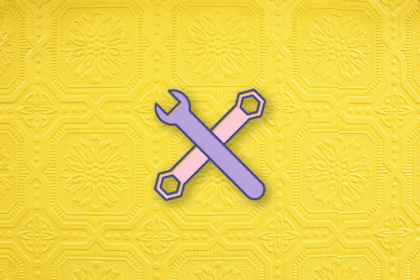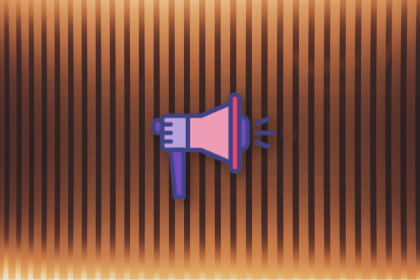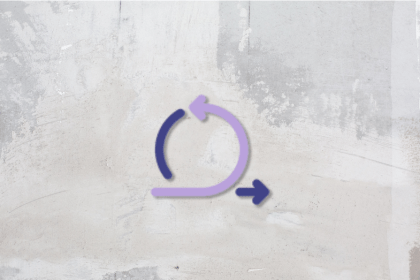Products don’t need to be unique to be successful. Instead, products just need to beat their competition by leveraging competitive advantages, whether that means offering better pricing, customer experience, user experience, etc.

However, to maximize your product’s success, you’ll need to gain a sustainable competitive advantage. In this article, you’ll learn what sustainable competitive advantages are, why they’re so important, and how to develop them.
Simply put, a sustainable competitive advantage is a competitive advantage that you’re able to maintain for at least the foreseeable future, ensuring that your competitors are unable or unlikely to beat your product on those fronts.
Take Patagonia, the outdoor clothing and gear manufacturer, as an example. Patagonia’s commitment to environmental and social responsibility has earned them a dedicated following who values their sustainable practices and chooses its products over others for this reason.
Patagonia uses recycled materials, supports fair labor practices, as well as donates a portion of its profits to environmental causes — all proving their commitment to their mission. This has created a notable sustainable competitive advantage for Patagonia and has helped them earn a reputation as one of the largest environmentally-conscious companies in the world.
A sustainable competitive advantage usually amounts to businesses being able to either charge less (e.g., because of smaller operational costs) or more (e.g., because they have a unique attribute). Either way, the core benefit is usually higher profits.
Another benefit is that some sustainable competitive advantages can end up becoming a recognizable and memorable part of the brand — like iOS is to Apple or like Mario is to Nintendo. Both are almost synonymous with their respective brands; you might even call them “flagship products.”
And finally, while having a sustainable competitive advantage won’t necessarily put your competitors out of business, it’d definitely spell bad news for them. Sustainable competitive advantage is one of the reasons that businesses end up pivoting into new territory, making the space less competitive either way.
There are many different types of sustainable competitive advantages, but we’ll focus on the four biggest ones — being cheaper, having unique attributes, operating within a more advantageous legal system, or by “being the first.” This list is not exhaustive, there are probably many more ways depending on the type of product:

Being cheaper is a good sustainable competitive advantage for products that find it difficult to compete in other ways; for example, because they have attributes similar to that of others.
There’s a huge misconception that products must have a unique selling proposition (USP) — a customer-facing feature or quality that their rival products don’t have — but this isn’t true if they have some other type of sustainable competitive advantage, such as lower pricing (one that they can sustain, specifically).
The ability to charge less pretty much boils down to spending less — reducing operational costs to the point that the product can be cheaper while still turning a profit — ideally while everyone (the business, its staff, and its customers) remains happy.
It’s difficult to give specific advice on how to reduce operational costs, as it largely depends on the product. Also, different departments will have different jurisdiction over different budgets. This is why reducing operational costs is usually a cross-department operation that’s spearheaded by those higher up. As a product manager, you can only optimize what’s in your jurisdiction.
To that end, it’s best to be somewhat budget-conscious from the get-go. This avoids being forced to cut costs by higher-ups in what might actually be a counterproductive way (for example, by cutting jobs, which studies show doesn’t increase profits). Instead, you could cut unnecessary expenses (like with tools with no or little value) and/or boost efficiency by optimizing product processes (DesignOps, DevOps, etc.). This mentality is often referred to as being lean.
By adopting a lean mentality, product teams can contribute to their business by being able to offer lower pricing — hopefully lower than that of their competitors — and, thus, have a sustainable competitive advantage.
Alternatively or in addition to having lower pricing, products can gain sustainable competitive advantages by having unique features or qualities, such as unique selling propositions that I mentioned earlier.
However, unique features and qualities aren’t naturally sustainable since competitors can just copy them. This is why you’ll want to consider owning intellectual property (IP), which prevents them from doing so.
Intellectual property law is different in every country, but generally speaking, there are three different types of IPs:
IPs can be difficult to obtain (especially patents), so ensure that you research the requirements for the countries you’d like to register them in before leaning into product ideas too much, at the same time ensuring that somebody else hasn’t already done so.
On that note, it’s worth remembering that intellectual property can be bought and even licensed. Some businesses are willing to do whatever it takes to gain a sustainable competitive advantage if they think it’s worth it.
It’s also possible to own the exclusive rights to something, like how Netflix owns the exclusive rights to certain TV shows — there are also movies, books, games, sports players, a person’s likeness or endorsement, and so on. Having these types of competitive advantages can be sustainable if licensed exclusively.
All in all, there’s a lot to think about when coming up with new products, their features, and how to design them.
Depending on where your business is registered (or more specifically, what laws and regulations it’s subject to), the number of resources that you’ll need to allocate to accessibility, data protection, payment processing, tax and VAT collection, and so on could wildly differ from that of your competitors. If they have an easier time of it in any way due to their legal jurisdiction, they could end up having a sustainable competitive advantage.
As a product manager, you’ll almost certainly have no say in your business’s legal jurisdiction; however, it’s worth investigating to see if there are any legalities that you can use to your advantage or paths to avoid that would put you at a disadvantage. Consider leveraging the experts within your organization too.
In a nutshell, get to know the laws and regulations that might affect your business and see what you can do at the product level to ensure that it doesn’t get bogged down by legalities and bureaucracy.
There’s something to be said about simply being the first. Some might call it a “market disruptor” or an “innovator” if the product truly is the first of its kind. These products tend to feel familiar and therefore trustworthy. A lot of people have them and perhaps you’ve been heavily subjected to their marketing too.
There is a line though. We’ve seen some of the biggest companies unseated because of their failure to adapt. One example of this is how Adobe’s Photoshop failed to address the needs of UI designers, leaving the market open for Sketch to build the first dedicated UI design tool. By the time Adobe had built Adobe XD to rival it, Sketch, with almost no skin in the game at all, had already become the first and most popular tool of its kind (although they would later make the same mistakes).
The only other way to get this sustainable competitive advantage is to acquire the product that has it, which is what Adobe has to do with Figma right now. However, being proactive and not hesitating to grow/expand/pivot is a far less costly approach.
Acquisitions also come with ethical concerns, especially when the result is a potential monopoly on customers (i.e., being the only one). To understand the worst-case scenario for customers, consider airports. Most cities only have one airport, so they infamously do not need to offer a good experience. In fact, by offering a bad experience, customers of the airport are more likely to spend money to relieve themselves of their stress and anxiety. Do they have the ultimate sustainable competitive advantage? Definitely! However, doing business this way obviously isn’t ethical and should be avoided.
To summarize, don’t let the opportunity to be the first pass you by if you have it, but don’t treat it like a golden ticket either.
It can be difficult to certify a competitive advantage as sustainable, as they rarely truly are. Consider KFC for example — their sustainable competitive advantage (their “original recipe” that their customers love) isn’t actually patented. To patent the recipe, they’d have to publicize it, which would result in people just cooking the recipe at home. So in theory, this means that competitors can use it, but in reality, the recipe is what we call a trade secret. Nobody can use it as long as KFC manages to keep it a secret.
When it comes to unique attributes, while a competitor might not be able to copy your intellectual property, they could invent an entirely new way of solving the problem that your intellectual property solves.
In addition, competitive advantages can stop being advantageous. Imagine that your product is a streaming service with exclusive rights to a popular TV show. As time passes, anybody that wants to watch it has done so, therefore its value has decreased. However, it might be valuable to another streaming service, so you decide to hold onto your competitive advantage. As more time passes though, more people have streamed it illegally, so it ceases to be a competitive advantage to any streaming service.
Laws can change and so can operating costs. Being the first can only get you so far. Literally anything can happen. With all this in mind, always consider how rock-solid your sustainable competitive advantages actually are, and like KFC, do whatever it takes to make them as sustainable as possible. Although sustainable competitive advantages are incredibly beneficial, they won’t make your business invincible.
Having a competitive advantage can ensure that customers choose your product over that of your competitors, however, having a sustainable competitive advantage buys more time and keeps you in the race for longer (sometimes forever).
As an example, user experience can be the deciding factor between two otherwise identical products, but it’s way too easy for either product to turn the tables and become the better one, which is what makes relying on unsustainable competitive advantages so risky. They’re important, but competitive advantages that are more sustainable are what turn products into serious contenders.
Thanks for reading!
Featured image source: IconScout
LogRocket identifies friction points in the user experience so you can make informed decisions about product and design changes that must happen to hit your goals.
With LogRocket, you can understand the scope of the issues affecting your product and prioritize the changes that need to be made. LogRocket simplifies workflows by allowing Engineering, Product, UX, and Design teams to work from the same data as you, eliminating any confusion about what needs to be done.
Get your teams on the same page — try LogRocket today.

A strategy map is a tool that illustrates an organization’s strategic objectives and the relationship between them using a visual diagram.

Insight management is a systematic and holistic process of capturing, processing, sharing, and storing insights within the organization.

While agile is about iterative development, DevOps ensures smooth deployment and reliable software updates.

Aashir Shroff discusses how to avoid building features or products that replicate what’s already in the market but, instead, truly stand out.